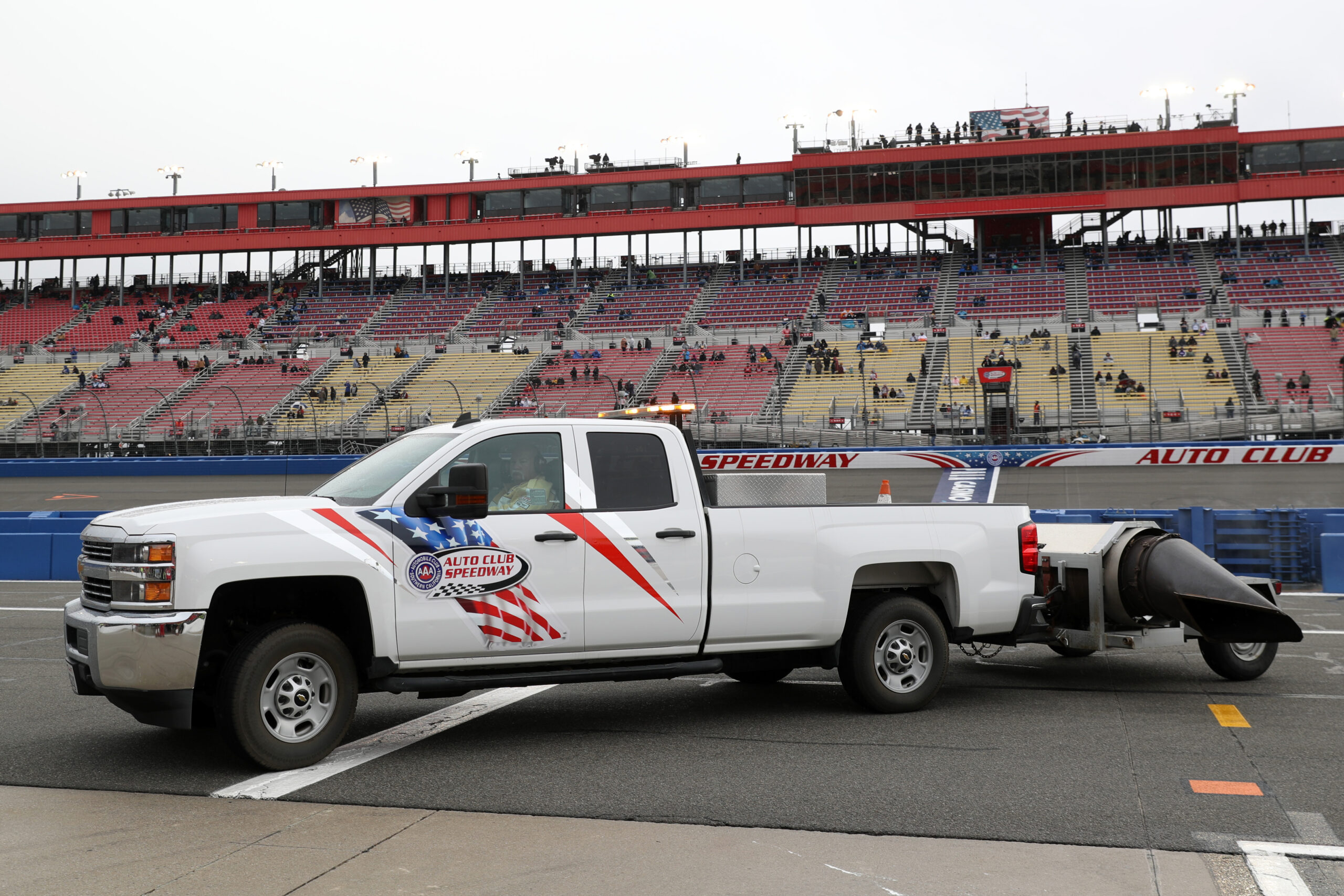
Rain is one of every race fan’s greatest fears. Nothing dampers a race weekend quite like rain, but, NASCAR tries to rectify it with track-drying methods. NASCAR track drying has evolved a lot throughout the years, so, how does NASCAR dry race tracks?
Track drying in NASCAR has an interesting history, as NASCAR used plenty of methods to dry race tracks. Sometimes they used low-flying helicopters, thinking that the wind from the propellers would dry the track. Other tracks would use tires dragged behind a pickup truck, such as Martinsville Speedway in 1980.
Other times, NASCAR would simply use the cars going around the track under caution to dry the track. They may even throw the green flag and start the race under a “Green/Yellow start” while slightly increasing the speed of the field to speed up the process. To see if the track was ready, they would send one driver out, called a “Rabbit”, to test the course at race speed to determine if it was good. The start of the 1979 Daytona 500 was conducted like this, with the first 15 laps of the race run under the yellow flag.
All of these options were either impractical, dangerous, or just not efficient. NASCAR made a major change in the late 20th century, implementing the use of jet dryers. A jet engine was attached to the back of a pickup truck, and hot air would blow on the track to dry the surface.
While this system was far more reliable, practical, and safe than previous methods, it still took a long time to dry the track. In 2013, NASCAR came up with a new method, called “Air Titan”, and it was put to the test at Talladega Superspeedway later that year. Rain delays in both the Cup and Xfinity Series saw the “Air Titan” dry the track in just enough time to complete both races including overtime on the scheduled date as darkness set in on the track. This revolutionized NASCAR track drying.
The problem with the system was that it was very complicated using far more vehicles than the jet dryers did, so, NASCAR improved the system soon afterward with “Air Titan 2.0”. This is the system NASCAR uses today.
Whereas the first version of air-titan needed multiple support vehicles including semi-trucks, pickup trucks, and sweepers, this version just needs a few pickup trucks. Essentially, Air Titan is an engine that fits in the back of a pickup truck, and it blows compressed air onto the track, blowing the water toward the apron.
The “Air Titan” is followed by a few old-school jet dryers, which blow hot air to get some residual water off the track. An Elgin sweeper goes along the apron of the track, picking up any standing water that is left over by the other drying equipment.
While track drying still takes between 2-2.5 hours for some of the bigger tracks, Air Titan significantly decreased track drying time Some tracks would take as long as 3 hours to dry with the old-school jet dryers. However, “Air Titans” are not the only things used to dry the track.
Drying the track is only one part of getting ready after a rain delay. Once the cars are on the track, the next step is drying pit road, which is a team effort between NASCAR and the teams.
NASCAR will usually run an Elgin Sweeper along pit road to get rid of the standing water. This process is why it usually takes a while to go green after a rain delay.
The race teams work on the individual pit boxes. Pit crew members use leaf blowers and squeegees to get rid of standing water and dry the surface of the pit box.
NASCAR also uses the cars on the track to assist in the process, but, primarily to inspect the surface. Drivers give feedback to NASCAR about which areas may need some extra work, or, the cars may be used to get some stubbornly wet areas towards the wall.
The track drying process is a tedious one, but, it’s about as good as it can be for now. The hope is always that NASCAR doesn’t have to use it during a weekend.
